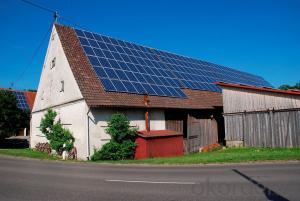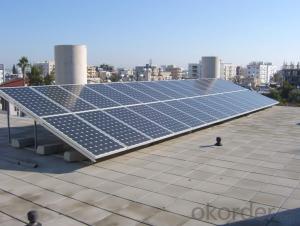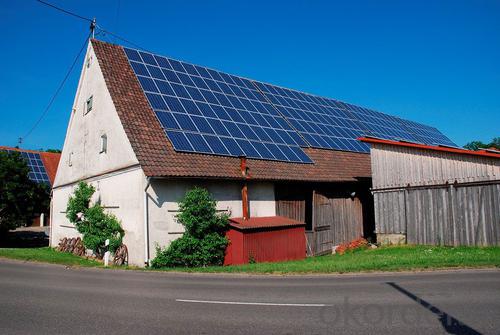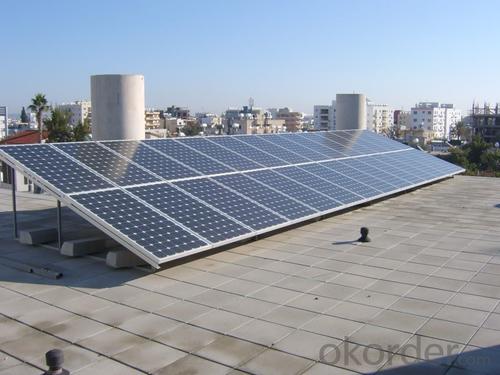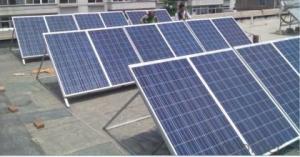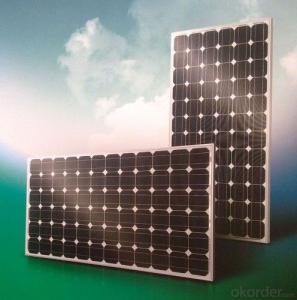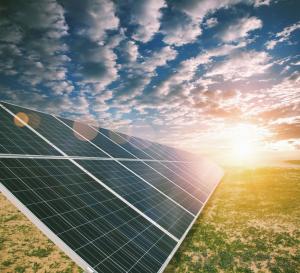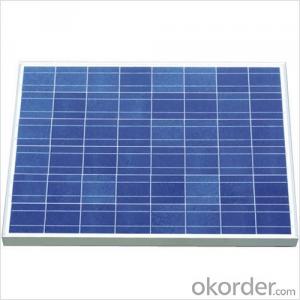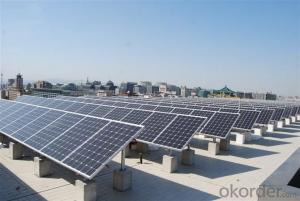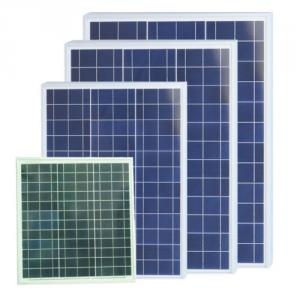Cmti Solar Panels - Polycrystalline Silicon Solar Panels 310W
- Loading Port:
- Nanjing
- Payment Terms:
- TT OR LC
- Min Order Qty:
- 200000 watt
- Supply Capability:
- 20000000 watt/month
OKorder Service Pledge
OKorder Financial Service
You Might Also Like
ABOUT US
We are a high-tech group wich specializes in solar products design,research, manufacture, sales,solar projects design and installation.
Our national sales service covers seven parts, including northeast, north, east, middle, south, northwest and southwest, international sales covers five continents and over forty countries, including Germany, Italy, Spain, France, America and Brazil etc.
INTRODUCTION
This installation Manual contains essential information for the electrical and mechanical installation that your must know before installing CUSTOMER PV modules. This also contains safety information you need to be familiar with .All the information described in this manual are the intellectual property of CNBM and based on the technologies and experiences that have been acquired and accumulated in the long history of CUSTOMER. This document does not constitute a warranty, expressed or implied.
CUSTOMER does not assume responsibility and expressly disclaims liability for loss, damage, or expense arising out of in anyway connected with installation, operation, use or maintenance of the PV modules. No responsibility is assumed by CUSTOMER for any infringement of patents or other rights of third parties that may result from use of PV module.
CUSTOMER reserves the right to make changes to the product, specifications or installation manual without prior notice.
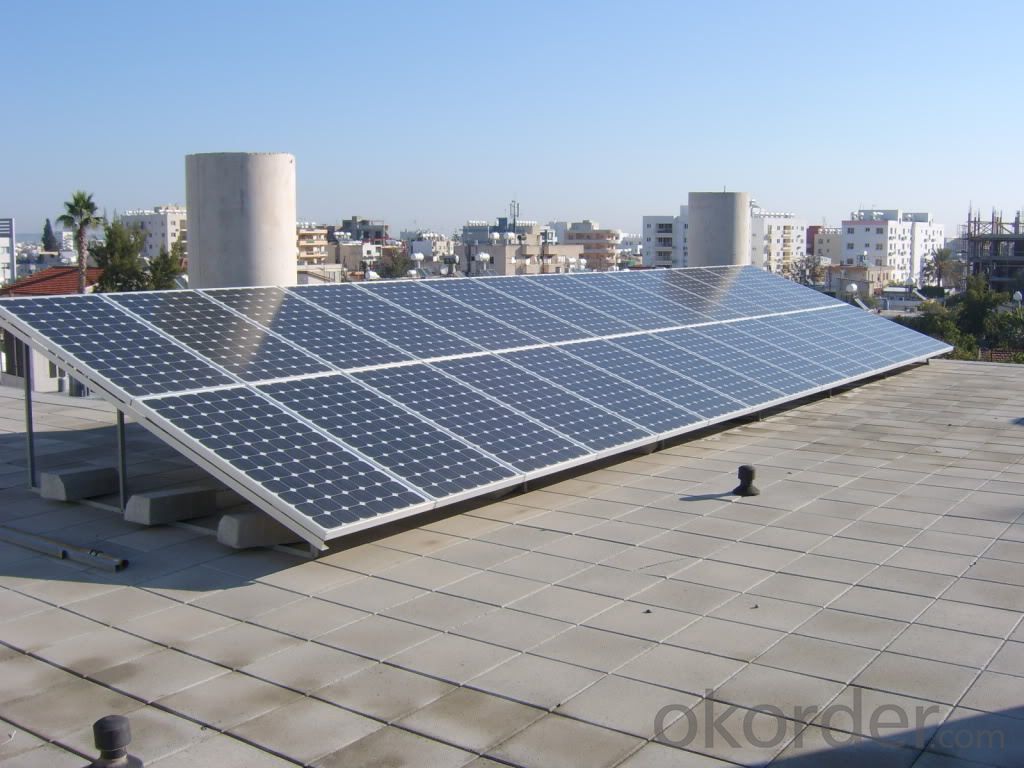
GENERAL WARNING
1. Before you attempt to install wire, operate and maintain the PV module, please make sure that you completely understand the information described in this installation manual.
2. Contact with electrically active parts of a PV module such as terminals can result in burns, sparks and lethal shock whether the PV modules is connected or not.
3. PV modules produce electricity when the sufficient sunlight or other sources illuminate the module surface. When the modules are connected in series, voltage id cumulative . When the modules are connected in parallel, current is cumulative. As a result, a large-scale PV system can produce high voltage and current which could present an increased hazard and may cause serious injury or death.
4. Do not connect the PV modules directly to the loads such as motor since the variation of the output power depending on the solar irradiation cause damage for the connected motor.
1:In the case of a blushless motor, the lock function becomes active and the hall IC is most likely to be damaged.
2:In the case of a brush type motor, the coil is most likely to be damaged.
WORK PRINCIPLE
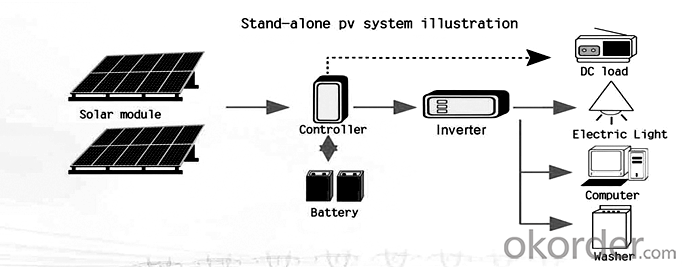
DATA SHEET
Maximum power | 310W |
Cell type(mm) | Polycrystalline solar cell 156*156 |
Number of cell(pcs) | 72(6*12) |
Manufacture site | China |
Open-circuit voltage(voc) | 45V |
Maximum power voltage(vmp) | 37V |
Short-circuit current(isc) | 8.8A |
Optimum operating current(imp) | 8.38A |
Power tolerance | 0~+5W |
Module efficiency | 16% |
Dimensions(mm) | 1956*992*40 |
Weight | 27 kg |
Backsheet | Silver |
Frame Colar | White |
Frame | Anodized Aluminum Alloy |
- Q: I want to know how you can store energy using a solar panel. The energy stored needs to be stored so that a light or laptop charger can plug in to it.
- Solar panel is not a energy storing device, rather it converts light energy to electrical energy and this energy either can directly used to run instruments or can be fed to battery for storing. The working of the solar panel is like the inverse action of a LED, i.e. a LED converts electrical energy in to light where as a solar panel converts light energy in to electrical energy, basically it is a P-N junction diode.
- Q: Can solar panels be used in combination with other renewable energy sources?
- Yes, solar panels can be effectively used in combination with other renewable energy sources such as wind turbines, hydroelectric power, or geothermal energy. This combination, known as hybrid renewable energy systems, allows for increased reliability, better utilization of resources, and a more stable power supply.
- Q: Can cold light make solar panels power
- light - heat - dynamic - electric conversion method through the use of solar radiation generated by thermal power, usually by the solar collector will absorb the heat energy into the refrigerant, and then drive the turbine power generation. The latter process is the light-heat transfer process; the latter process is the heat-to-conversion process, which is the same as the conventional thermal power generation.
- Q: I really would like to have my own solar panel, but i don't know how. Most of the panels i have looked at are for car batteries but i'm not sure how this would be able to be transfered into electricity. I'm looking to power things like lamps, a stereo and various chargers for phones and ipods. Please explain to me how i could adapt a solar panel to my uses. Thank you.
- Yes, it can. Now what do you expect out of it? It can reduce your electric bill by some amount. That amount depends on how many solar panels you install and how sunny your days are. You have to pretty much cover a roof to get a substantial electric reduction. There are 2 companies where I live that have installed solar panels and covered most of their roofs with them. They've reduced their electric bill by about 30%. It's expensive to do this. Don't expect a fast pay back. In fact you may save more by using solar heating panels for hot water than by using solar electric panels. I think it's cheaper as well.
- Q: I am seriously thinking about installing PhotoVoltais Solar panels (that generate electricity) on my roof. Besides the usual (cost, ROI, etc.), I was researching for the maintenance of these panels. We have tall trees around the house and needles and leaves fall on our roof all the time... not to mention the dirt and grime that collects over time.Do these decrease the capacity of the panels? Do the panels require a regular maintenance?Thanks!
- New solar panels are clean and shiny and they look cool. Then they get dirty with dust and debris caught on the wind and residues left behind by rain and birds. Solar panels must be regularly cleaned and maintained in order to keep them operating efficiently and maximize the amount of sunlight they convert into electricity. Unlike windows your solar system needs to have a clean and clear surface to ensure they are working at their maximum efficiency. If they are not at their optimum performance it means they are not producing the amount of electricity that they could be. Solar panels will attract dirt, dust, soot, pollen, tree sap and salt crystals in coastal regions creating a fine layer of grime. This layer reduces the amount of light reaching the silicon cells under the glass surface and reduces the panel's effectiveness. A solar panel that has never been cleaned could be producing almost a third less power than it otherwise could be. Some have reported a ten to fifteen percent loss of solar output due to dirty panels. From the ground the panels may appear to be clean, just like your windows. Up close however you can see the grime that has built up from the dirt and pollution in the air. A more noticeable deposit that can be left on panels is bird droppings. These tend to completely block the light from areas of the photovoltaic panel and can considerable reduce its effectiveness. See much more about solar panels maintenance below link
- Q: How do solar panels affect the property's energy independence?
- Solar panels can greatly enhance a property's energy independence by harnessing the sun's energy to generate electricity. By producing renewable energy on-site, solar panels reduce dependence on the traditional power grid and decrease reliance on fossil fuels. This allows property owners to generate their own clean, sustainable energy, leading to reduced electricity bills and a more environmentally friendly lifestyle.
- Q: how much energy does a kilowatt solar panel produce in a year? (average)
- You would be amazed how often I have answered this question. The answer is that it depends on your latitude and local weather . Let's see if I can give you enough information so that you can determine the answer for yourself. A kW solar panel is rated at kW when it is exposed to a solar flux of kW/m^2 (called a peak sun hour). There are readily available tables of effective peak sun hours per day by city (see Reference ). Let's use Fairbanks, AK as an example (it is the first line of the table). Fairbanks get an average of 3.99 of peak sun hours per day on average. So your panel would produce 3.99 kW*hr per day on average.
- Q: Can solar panels be used in areas with high levels of shade?
- Solar panels can still be used in areas with high levels of shade, but they may not be as efficient as in areas with direct sunlight. The shade reduces the amount of sunlight reaching the panels, which decreases their overall performance. However, with advancements in technology, some panels are designed to handle shade better than others. Additionally, proper installation and placement of the panels can help optimize their performance even in shaded areas.
- Q: Can solar panels be installed on electric fences?
- Yes, solar panels can be installed on electric fences. The panels can provide the necessary power to keep the electric fence operational without relying on traditional electrical sources.
- Q: What is a good sight that I could go to about installing solar panels and all of the considerations of it?
- Biggest problem is availability of sunshine in the UK. Do you get enough to warrant the fuss or financial layout? Another problem is the orientation of your roof. Facing directly south, with a slope (in degrees) equal to your longitude would be ideal. As far as electricity goes, you have to be tied into the grid to take care of the times you are not generating all the power you need. When you are generating more than you need, you sell it but get paid at the rate the utility normally pays, a lot less than you would pay to buy from them. Still, it's something.
Send your message to us
Cmti Solar Panels - Polycrystalline Silicon Solar Panels 310W
- Loading Port:
- Nanjing
- Payment Terms:
- TT OR LC
- Min Order Qty:
- 200000 watt
- Supply Capability:
- 20000000 watt/month
OKorder Service Pledge
OKorder Financial Service
Similar products
Hot products
Hot Searches
Related keywords
